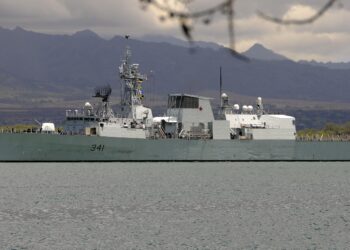US Air Force,
ELMENDORF AIR FORCE BASE, Alaska: Cooperative Cope Thunder 06-3 is the largest multi-lateral air combat exercise in the Pacific bringing together about 1,300 participants to train in Alaska.
The operations officer for the exercise said Cope Thunder is very air forces centric — providing realistic training in joint and combined offensive counter air, interdiction, airdrop, close-air support and large force employment.
“The exercise simulates wartime conditions that we and our coalition partners could face together in actual combat,” said Lt. Col. Reggie Smith. “We have the blue air flying against the red air. They'll meet in the airspace and execute the wartime tasking or scenario they were given, then they will come back and debrief.”
Military members participating are from the United States, Australia, Japan, NATO, Korea, Germany, Canada and Sweden. The exercise also includes observers from Bangladesh, Sri Lanka, Russia, Mexico and Mongolia.
Korean C-130s as well as C-130 Hercules from Yokota Air Base, Japan, are participating in Cope Thunder. Other aircraft include C-160s and NATO E-3A AWACS from Germany and Elmendorf's E-3 Sentry AWACS.
Training is conducted on the Pacific Alaskan Range Complex, the largest range area in the world. Air operations are being flown out of Elmendorf and Eielson. Colonel Smith said the primary exercise role at Elmendorf Air Force Base is command and control and tactical airlift, whereas Eielson AFB includes fighters and tanker support.
“I'm excited about learning new tactics, flying on the ranges and seeing what Alaska has to offer,” said German air force Capt. Helmut Shafer, a navigator on the C-160s. “We hope to gain experience in low-level flying as well as some maneuver protection combinations. This will be an opportunity to get familiar and work with the fighters.”
This year marks the second opportunity to participate for Capt. Jaekyong Seo, an F-16 pilot with the Republic of Korea air force. Captain Seo also serves as a translator in helping overcome the challenges associated with an exercise involving many countries and languages.
“It is an excellent training opportunity to work with Americans and the other countries to plan and execute a wartime mission,” he said.
Also key to overcoming challenges in a multi-lateral exercise is planning.
“More than eight months of preparation comes together as (Cooperative Cope Thunder),” said Maj Scott Lew, the chief of airlift operations.
The first week included mission planning and briefings, followed by a familiarization day when crews prepared for and flew their respective missions without any simulated threats or wartime scenarios. The familiarization day also allowed crews to become accustomed with the Alaskan ranges and terrain prior to exercise execution.
Cooperative Cope Thunder runs through Aug 5.









